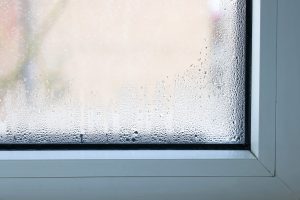
Window condensation is a common issue that can affect both residential and commercial properties. It occurs when warm, moist air comes into contact with cooler surfaces, leading to the formation of water droplets on the glass. This not only obstructs visibility but can also lead to more serious problems such as mould growth, damage to window frames, and even structural issues. For tradespeople, understanding how to prevent window condensation is essential for providing effective solutions to clients. Here, we’ll explore various methods to tackle this issue while highlighting relevant products from Solent Glass and Glazing that can help.
Types of Window Condensation
Before delving into prevention methods, it’s important to understand the types of condensation that can occur:
- Internal Condensation: This happens on the inside surface of windows and is often a sign of excess humidity within the property. It can be caused by activities such as cooking, showering, or drying clothes indoors.
- External Condensation: This forms on the outside surface of windows and is generally not a cause for concern. It often occurs during colder months when warm air meets cold glass.
- Between-Pane Condensation: This indicates a failure in the seal of double or triple-glazed windows, allowing moisture to enter the space between the panes.
Key Causes of Window Condensation
Several factors contribute to window condensation, including:
- High Indoor Humidity: Excess moisture in the air can lead to condensation, especially in areas like kitchens and bathrooms.
- Poor Ventilation: Inadequate airflow can trap humid air indoors, increasing the likelihood of condensation.
- Temperature Differences: A significant temperature difference between the inside and outside of a building can exacerbate condensation issues.
Effective Strategies to Prevent Window Condensation
1. Control Indoor Humidity Levels
One of the most effective ways to prevent window condensation is to manage indoor humidity levels. Here are some practical steps:
- Use Dehumidifiers: Installing a dehumidifier can significantly reduce moisture levels in the air, making it less likely for condensation to form on windows. We offer a range of energy-efficient dehumidifiers that can be integrated into your projects.
- Ventilation: Ensure that kitchens and bathrooms are well-ventilated. Installing exhaust fans can help remove humid air quickly. Consider recommending our uPVC windows with built-in trickle vents for improved airflow.
2. Improve Air Circulation
Proper air circulation can help prevent moisture from settling on windows:
- Open Windows: Encourage clients to open windows periodically to allow fresh air to circulate, especially during milder weather.
- Ceiling Fans: Installing ceiling fans can help distribute air evenly throughout a room, reducing humidity levels.
3. Insulate Windows
Upgrading to energy-efficient windows can greatly reduce the risk of condensation:
- Double or Triple Glazing: Recommend our double or triple-glazed windows. These windows provide better insulation, reducing the temperature difference between the inside and outside, which helps prevent condensation.
- Window Insulation Kits: For clients looking for a temporary solution, window insulation kits can be applied to existing windows to improve thermal performance.
4. Manage Heat Sources
Maintaining a consistent indoor temperature can help reduce condensation:
- Heating Systems: Advise clients to keep their heating systems running at a consistent temperature. Sudden changes in temperature can lead to condensation.
- Avoid Drying Clothes Indoors: Encourage clients to dry clothes outside or use a tumble dryer with proper ventilation to minimise indoor humidity.
5. Use Moisture Eliminators
Moisture eliminators can be a quick fix for high humidity levels:
- Moisture Absorbers: Products like silica gel or calcium chloride can be placed in areas prone to condensation to absorb excess moisture.
6. Address External Factors
Sometimes, external factors can contribute to condensation:
- Trim Vegetation: Ensure that shrubs or trees are not blocking airflow around windows. This can help reduce humidity levels near the glass.
- Apply Water-Repellent Coatings: Consider using water-repellent coatings on the exterior of windows to help prevent moisture accumulation.
7. Regular Maintenance
Regular maintenance of windows can prevent issues before they arise:
- Check Seals: Inspect window seals regularly for any signs of wear or damage. If seals are compromised, moisture can enter and lead to between-pane condensation.
- Clean Windows: Keeping windows clean can help improve visibility and reduce the likelihood of condensation forming.
When to Consult Professionals
If condensation persists despite implementing these strategies, it may be time to consult a professional. Persistent condensation, especially between panes, often indicates a seal failure that requires replacement. We can assist with the replacement of faulty windows, ensuring that clients have reliable, energy-efficient solutions.
Take Action Today
Preventing window condensation is crucial for maintaining the integrity of a property and ensuring a comfortable environment for occupants. By understanding the causes and implementing effective strategies, tradespeople can provide valuable solutions to their clients. We offer a range of high-quality products, including double and triple-glazed windows, that can significantly reduce condensation issues.
For tradespeople looking to enhance their offerings, consider incorporating these prevention methods and products into their services. If you’re interested in learning more about how we can support your projects, use our free online quoting engine today to get a quote or consultation.